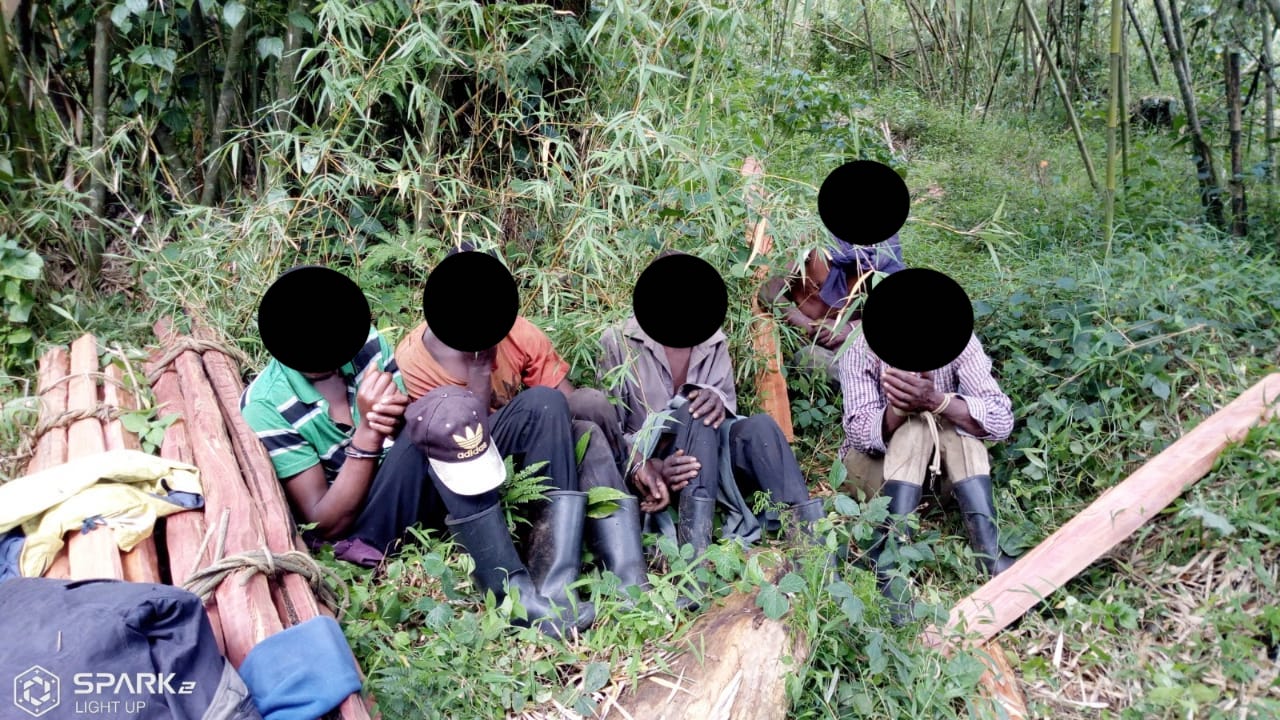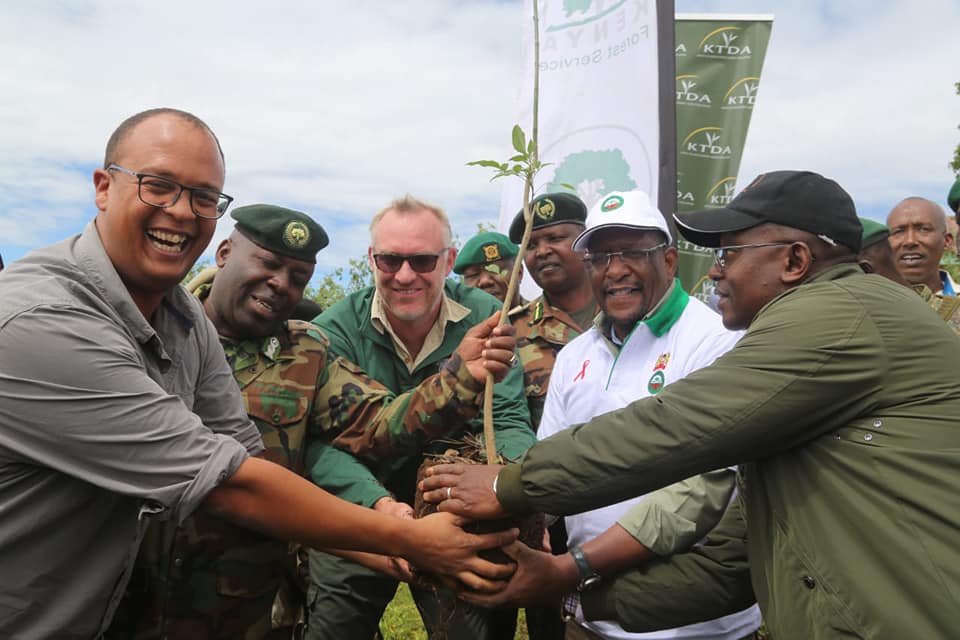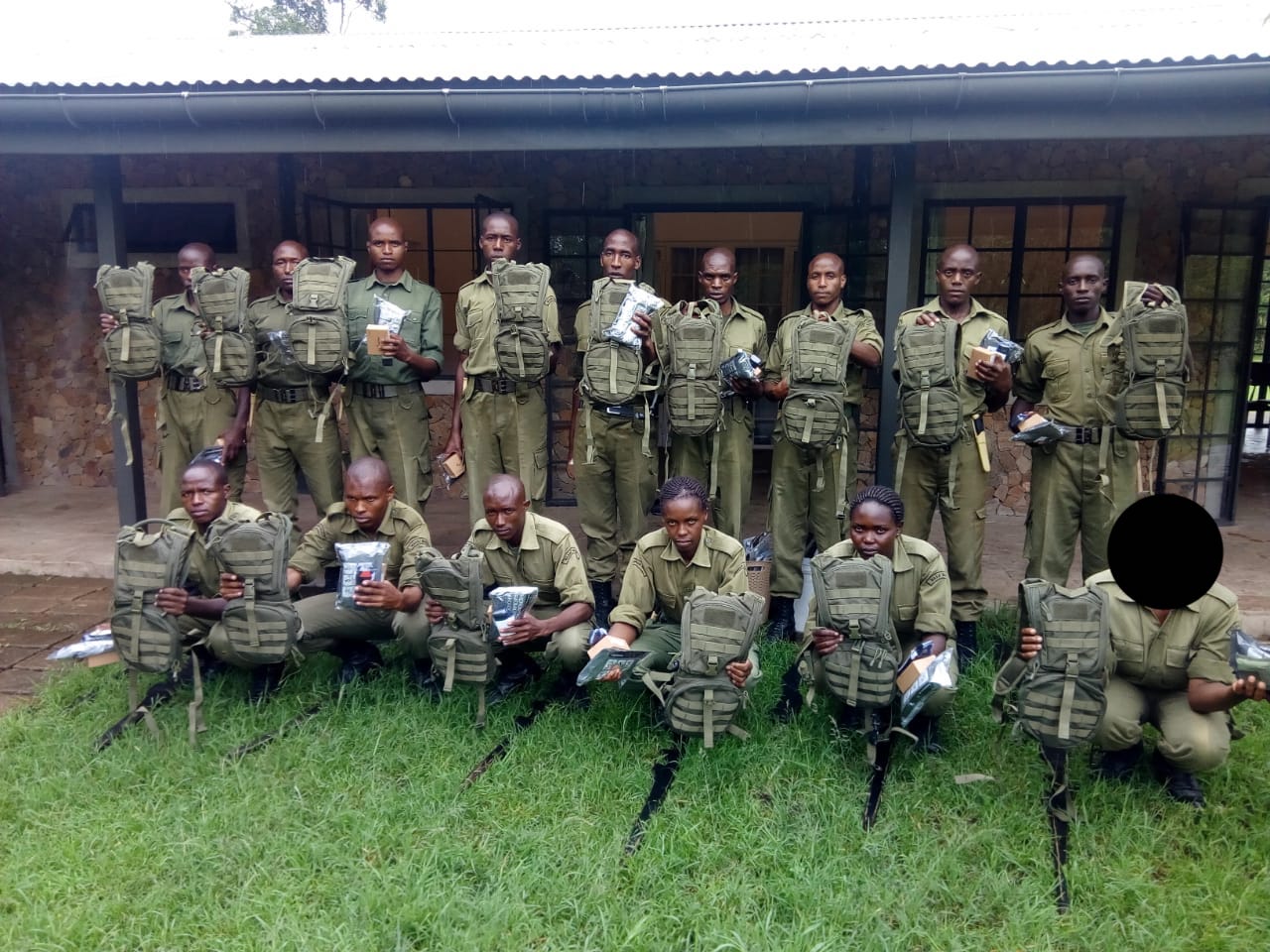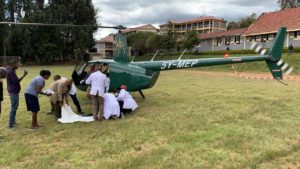The Mara Elephant Project rangers finished 2019 strong and the intelligence department contributed to two notable arrests in the fourth quarter and the seizure of 13.5 kg of ivory. In the fourth quarter, Mara Elephant Project rangers were tasked with focusing on habitat protection activities specifically in the Loita, Mau and Nyakweri forests. This has been quite a challenge for our rangers as communities still rely heavily on cedar and other hardwoods for their houses, fences or firewood and especially where land ownership is unclear communities have been unsustainably harvesting hardwoods. In total, in the fourth quarter, MEP rangers destroyed 208 kilns, 136 bags of charcoal, arrested 22 suspects for illegal logging or charcoal production and recovered 6,180 illegally logged posts, 10 pieces of podo and 1,575 pieces of cedar. MEP rangers also removed 36 snares targeting small animals. In October alone, the Sheldrick Wildlife Trust Mau De-Snaring Unit destroyed 23 kilns, 55 bags of charcoal, confiscated 40 illegally logged posts, removed six snares and arrested 10 suspects for illegal logging.

Five suspects arrested for illegal logging in the Mau Forest on October 24.
While these high numbers are alarming, there is hope. In November, as part of the Mau Forest rehabilitation project spearheaded by the Kenyan Government, MEP was invited to the launch of a tree planting initiative together with the Cabinet Secretary for Environment, Kenya Wildlife Service, Kenya Forestry Service, Police, Administration and NGO Stakeholders. The Cabinet Secretary Ministry of Environment and Forestry Hon. Keriako Tobiko led the team in planting over 200,000 seedlings manually and oversaw 4.5 million seeds planted through aerial seeding. The rehabilitation process has been an overall success and already signs of this rehabilitation have started to show in the previously settled areas.

The tree planting initiative with multiple private and government organizations present.
Also helping with habitat protection are the 14 new rangers MEP deployed in the Mau and Loita in the fourth quarter of 2019. The 14 total new recruits, five for Loita and nine for the second Sheldrick Wildlife Trust Mau De-Snaring Unit, completed their basic tactical training at MEP HQ in December. Their course was delivered by MEP officers and covered navigation, field craft, radio communications, patrol medic, intel procedures, drill, Kenya wildlife laws, securing a crime scene, and MEP SOPs. The recruits all passed their training exercise and they were deployed on the 22nd of December. With the teams in Loita and Mau we are able to cover more area and we can expect an increase in protection of all wildlife and habitats in their new areas of operations.

The new MEP rangers with gear at MEP HQ including one new intelligence ranger.
 The Karen Blixen Camp Trust helicopter was used for a variety of tasks in the fourth quarter which shows just how vital this asset is for the Mara ecosystem as a whole. In October, the MEP team took part in a black rhino treatment when we lent aerial support to the Kenya Wildlife Service Vet Dr. Limo. Also, in October, MEP rescued a man using the KBCT helicopter who was gored by a buffalo. The Mara North Conservancy rangers rushed the man to MEP HQ, and we rushed him to the Tenwek Hospital (pictured left). He was losing a lot of blood and his lungs were punctured. The Karen Blixen Camp Trust helicopter rescue most likely saved his life. In November, we partnered with Dr. Limo again for a baby elephant treatment. A young calf had a snare wound that needed to be treated and the helicopter was essential in keeping the mother at bay while Dr. Limo worked. Also, in November, MEP collared a female elephant, Alice, in the Kericho part of the Mau Forest. The collaring operation was difficult with thick vegetation and elevation and the helicopter kept all personnel and the elephant safe. It was also used toward the end of November to do some reconnaissance of illegal logging and charcoaling sites was used to transport a KWS ranger to the hospital after he was shot in the cheek with an arrow after a community incident.
The Karen Blixen Camp Trust helicopter was used for a variety of tasks in the fourth quarter which shows just how vital this asset is for the Mara ecosystem as a whole. In October, the MEP team took part in a black rhino treatment when we lent aerial support to the Kenya Wildlife Service Vet Dr. Limo. Also, in October, MEP rescued a man using the KBCT helicopter who was gored by a buffalo. The Mara North Conservancy rangers rushed the man to MEP HQ, and we rushed him to the Tenwek Hospital (pictured left). He was losing a lot of blood and his lungs were punctured. The Karen Blixen Camp Trust helicopter rescue most likely saved his life. In November, we partnered with Dr. Limo again for a baby elephant treatment. A young calf had a snare wound that needed to be treated and the helicopter was essential in keeping the mother at bay while Dr. Limo worked. Also, in November, MEP collared a female elephant, Alice, in the Kericho part of the Mau Forest. The collaring operation was difficult with thick vegetation and elevation and the helicopter kept all personnel and the elephant safe. It was also used toward the end of November to do some reconnaissance of illegal logging and charcoaling sites was used to transport a KWS ranger to the hospital after he was shot in the cheek with an arrow after a community incident.


An aerial patrol from the Karen Blixen Camp Trust helicopter that uncovered an illegal logging site in November.
Finally, in December, the helicopter provided aerial support to KWS for a collaring operation for a male lion in Nakuru. The lion was caught in a trap in Eldoret after preying on livestock there. There have not been any lions in Eldoret recorded since the 1950s. No one knows how it got to Eldoret but when it was caught, he was taken to Nakuru National Park where we collared and released (pictured right).
When reflecting on what we have accomplished this year I am honored to say that the organization has come a long way. This year Dr. Jake Wall came on board in January to direct the conservation and research department; we took delivery of the new Karen Blixen Camp Trust helicopter in June; started a second Sheldrick Wildlife Trust team in the Mau Forest; started a new team in the Loita Forest with the support of Lori Price and the Elephant Crisis Fund; purchased two new vehicles; built on our already strong partnerships and made new partners in the Mara, Shimba Hills and Tanzania; collared new elephants in the Rift Valley, Nairobi, Mau, Kerio Valley, Nyakweri Forest, and replaced collars in the Mara. All of this has been made possible by our supporters, our dedicated staff and key partners. Thank you to everyone who made all this possible and I look forward to a an even more effective project for elephant protection in 2020.


